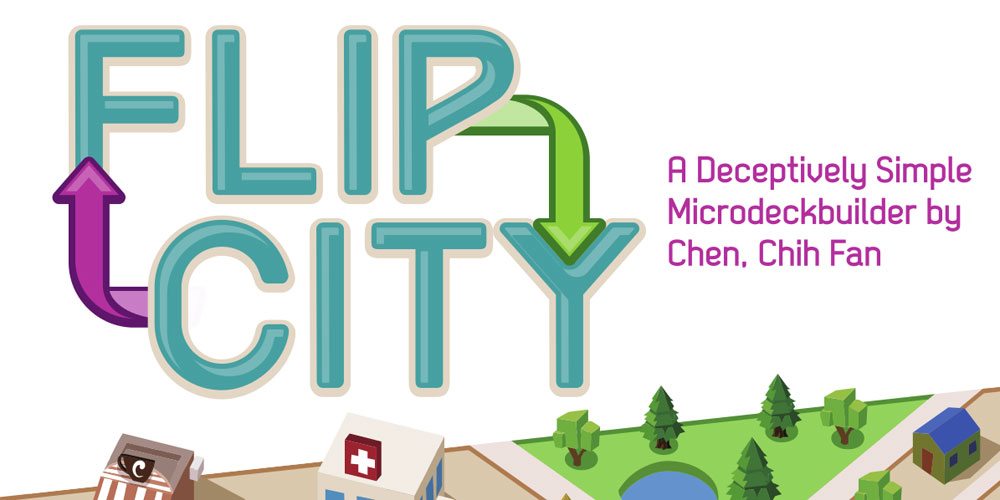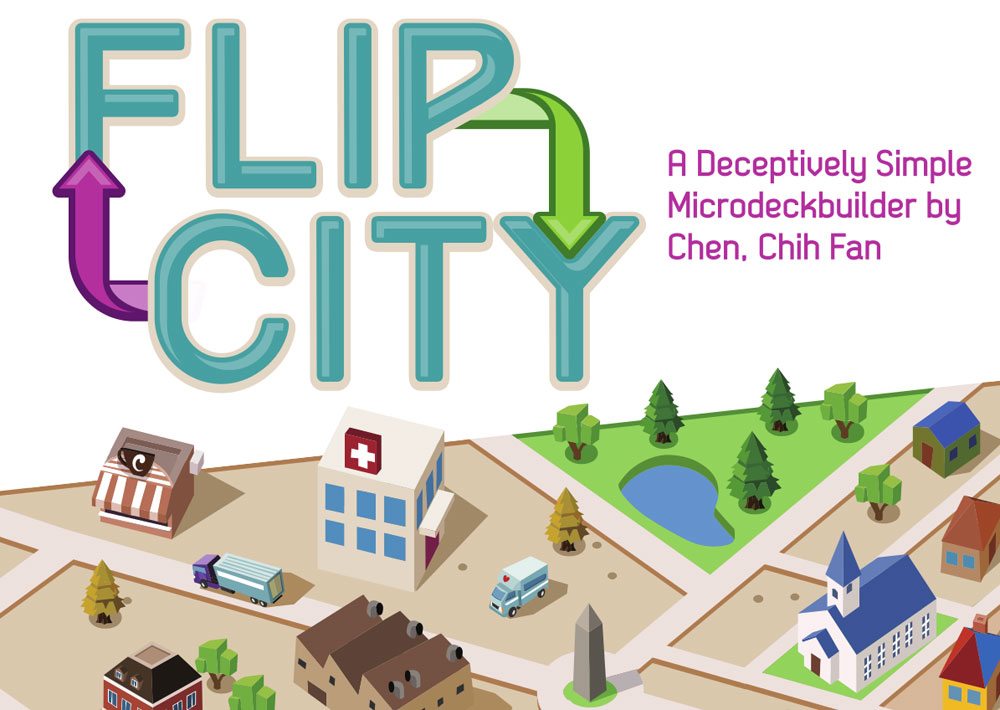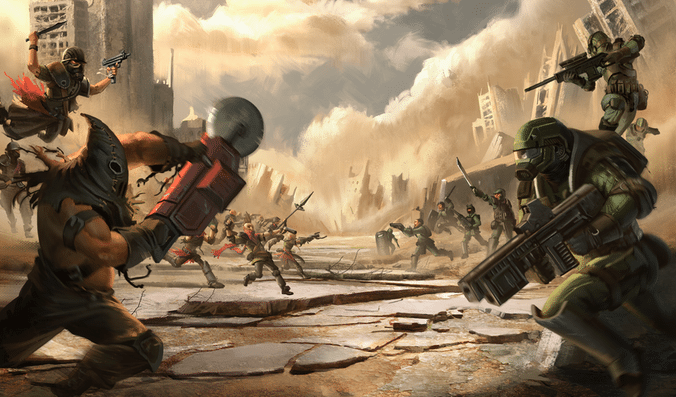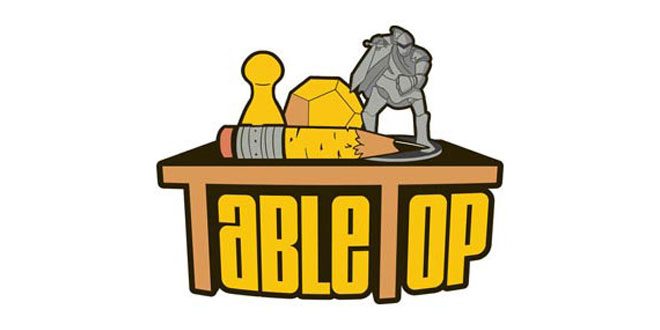Welcome to Flip City. It’s a small town: a convenience store, a hospital, a factory, a central park, and a few residents. But you’ve got big plans. Raise money to expand and improve your city, but watch out that you don’t make your residents too unhappy!
At a glance: Flip City is a micro-deck-building game for 1 to 4 players, ages 8 and up, and takes 30-50 minutes to play. It retails for $19.95 and is currently available from Tasty Minstrel Games. It was originally from Taiwanese publisher Homosapiens Lab (under the title Design Town) and has been licensed by TMG for sale in the US.

Components:
86 double-sided building cards:
- 20 Residential Area/Apartment
- 16 Convenience Store/Shopping Mall
- 10 Office/Trade Center
- 16 Hospital/Church
- 12 Factory/Power Plant
- 12 Central Park/Station
Each building card has a large coin in the top right corner representing its price. In the lower left there are some icons showing what you get when you play that card–money, unhappiness, and points. The lower right will either show a cost to flip the card to its developed side (a purple “up” arrow) or a bonus that you can take if you recycle the card by flipping it back to its basic side (a green “down” arrow). Finally, at the bottom of each card is additional text pertaining to the card.
The cards are, for the most part, easy to read and understand. There are a couple of icons (on the Power Plant, for instance) that are not immediately intuitive, but since there aren’t that many different cards it’s easy to look up the abilities in the rules.
The Office/Trade Center cards are actually a mini-expansion, so you won’t necessarily use them in every game.
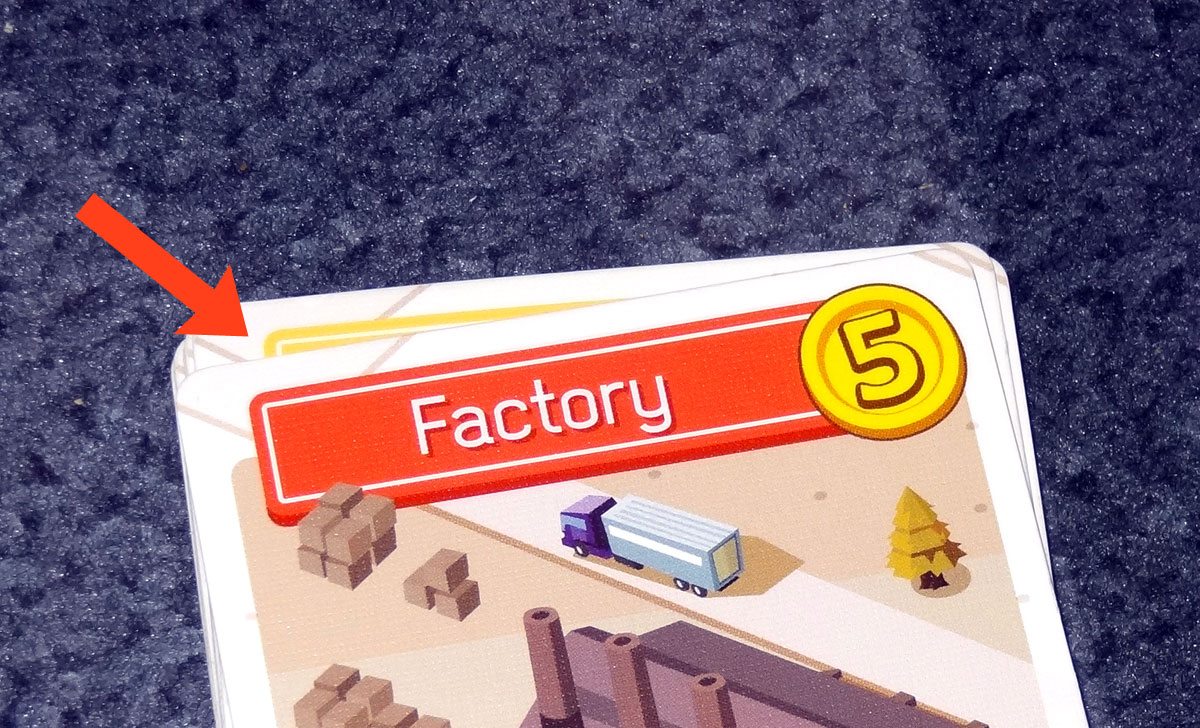
The cards are a nice quality and shuffle easily. My only complaint is that I think it should have had a slightly larger border, because there’s a press-your-luck element to the game that means you shouldn’t ever know what’s underneath the top card of your deck. But if you set the cards down and the top card shifts slightly, you can see what’s underneath it. Apparently the original Taiwanese version had no border whatsoever so this problem was even more pronounced, but I think they could have made a little more border just to help with that. That said, I usually end up playing the game holding my entire deck in my hand so that the cards don’t slip around.
How to Play
The goal is to score at least 8 points on a single turn, or satisfy another victory condition. (Currently the only other victory condition is on the Convenience Store card, which lets you win if you play 18 or more cards on your turn.)
To set up, you give each player: 4 Residential Areas, 1 Apartment, 1 Convenience Store, 1 Hospital, 1 Factory, and 1 Central Park. In the center of the table, you form the supply: 12 Convenience Stores, 12 Hospitals, 8 Factories, 8 Central Parks. (If you’re using the Office expansion, you put 10 Offices there, too.)

Each player shuffles their cards and forms a deck. Note: because the cards are double-sided and you play off the top of your deck, you have to shuffle without looking at your cards.
On your turn, you start with the Play Cards Phase. Play as many cards as you wish off the top of your deck until you decide to stop or you reach 3 unhappiness, at which point you bust, your turn ends immediately, and you discard all of your played cards. During the Play Cards Phase, you may also “recycle” cards from your discard pile that have been flipped to use their bonuses. For instance, a Shopping Mall in your discard pile may be recycled in order to gain 1 coin–but now it’s back to a Convenience Store. If you run out of cards, you may choose to reshuffle your deck, look at what ends up on top, and decide whether to play more cards or stop.
Next there’s a Building Phase. Using the coins you earned this turn, you may choose one of the following: Buy, Flip, or Develop. To Buy, you choose a card in the supply, pay its cost, and put it into your discard pile. To Flip, you choose a card in your discard pile, pay its flip cost (the purple “up” arrow), and flip it over. (Note that cards you played this turn aren’t in the discard pile yet.) To Develop, you pay the purchase cost and the flip cost of a card in the supply, flip it over, and put it into your discard pile.
After your Building Phase action, if you have earned either 8 points or you played a Convenience Store and have 18 or more cards played this turn, then you win! Otherwise, discard all the cards you played this turn and your turn ends. Coins, points, and unhappiness reset to zero at the end of your turn.
For the solo variant, you have the same starting cards but only 4 of each card in the supply. Every time you shuffle your deck, you have to choose a card in the supply to return to the box. You must achieve your victory condition before the supply runs out of cards to win.
That’s basically it. There are specifics on how the individual cards work, of course, but those are all the rules.
For instance, the Residential Areas (which generate 1 coin and 1 unhappiness) are the worst cards in the game to have. If it’s at the top of your deck, you must play it on your turn, so having Residential Areas is what makes you likely to bust. Flipping them turns them into Apartments, which still provide 1 coin and 1 unhappiness, but don’t have to be played. Unlike the other cards, Apartments don’t have recycle bonuses. Instead, there’s another flip cost, and if you flip an Apartment, you turn it back into a Residential Area and put it into another player’s discard pile. It’s a handy way to reduce your unhappiness and mess with your opponents at the same time, but it’s not cheap.

Here’s a quick run-down of some of the other card abilities:
Convenience Store: 1 coin, lets you win if you play 18 cards. Shopping Mall: 2 coins, 1 point, but you have to play the next card in your deck; recycle to get 1 coin.
Hospital: 1 coin, 1 unhappiness, plus 1 coin for each unhappiness you’ve earned already this turn. Church: Doesn’t provide resources, but raises your unhappiness limit by 1 this turn; recycle to increase your unhappiness limit by 1 for the turn.
Factory: 2 coins, discard the bottom card of your deck. Power Plant: 1 coin, 1 unhappiness, 2 points, place an Apartment into another player’s discard pile; recycle to place it back on top of your deck.
Central Park: 2 points, gives you 1 additional Buy during your turn. Station: 3 points, gives you 1 additional Flip this turn and makes all flips cost 1 less; recycle for 1 additional point this turn.
Office: 1 coin, when shuffling it goes back on top. Trade Center: 2 coins; recycle to gain 1 unhappiness and shuffle your discard pile back into your deck.
The Verdict
When I went to Taiwan a few years ago, I spent some time exploring game stores in Taipei and was particularly interested to see what sort of games were being designed in Taiwan and China. One of the game companies I saw at the time with an original game design (not just a re-themed clone of an existing game) was Moaideas Game Design, which is also credited for Flip City. So it’s fun to see a Taiwanese game finally getting US distribution, and I’m curious to see what will come next.
Flip City combines a couple of my favorite game mechanics: deck-building and press-your-luck. I like the trend of small deck-building games and doing a lot with fewer cards; a few other notable examples are Valley of the Kings, Eminent Domain: Microcosm, and Star Realms. It’s fun to get a bit of deck-building in a game that I can fit in my pocket and take anywhere. Flip City accomplishes the reduction with the double-sided cards, which is a clever trick. The downside is the blind shuffling, which is particularly tricky because you have to be careful not to flip anything over while you’re not watching your hands. In the end, though, I think it’s worth it for the way you essentially get twice as many components out of a deck of cards.
The deck-building aspect feels slower than typical deck-building games, though that’s not surprising in a game with fewer cards. You’d run out of cards way too quickly if you were adding them at the same rate. The difference here is that sometimes you’re improving your deck by flipping cards over, so the deck size doesn’t change. Other times you may be recycling them (flipping them back over), which also doesn’t change the size. And, of course, there are ways to get Residential Area/Apartment cards into somebody else’s discard pile, which then reduces your deck again. You start with 9 cards and by the end of the game you might get to 20 cards, but I’ve played games where the winning player only had a dozen cards. (That makes you realize how difficult the Convenience Store’s 18-card win can be.)
The press-your-luck aspect of the game is a key part of the gameplay. You know at the beginning that you have four Residential Area cards that must be played when they come up, and each one gives you an unhappiness. Your goal most turns is to gain as much money as you can without coming across one that will put you over your unhappiness limit. There are a few different ways to go about it: buy a whole lot of Convenience Stores (they’re cheap) to dilute those Residential Areas, convert all your Residential Areas into Apartments so they don’t have to be played, or try to get some Churches so that the unhappiness doesn’t make you bust. You could play very conservatively to avoid busting, but sometimes it’s inevitable (e.g., you have three Residential Areas at the top of your deck when you start your turn) and usually it means you’re not going to be able to generate much income.
Even with only 10 different card faces (12 if you add the Office/Trade Center), there are a lot of different things you can do with the cards as you play, thanks to the flip and recycle abilities. The rules are written in a way that imply expansions, and I see that there’s is at least one expansion listed on BoardGameGeek, though it’s only available in Asia so far.
The theme is a little strange and isn’t explained in much detail–we thought it was funny that the towns with the least unhappiness are those with the fewest residential areas and apartments. Just goes to show you that city planning would be so much easier if it weren’t for those pesky citizens, right? Although the text on the back of the box hints that maybe you’re getting money from the various places, and taxing the residents is what makes them unhappy. At any rate, I don’t try to place too much emphasis on connecting the theme to the mechanics because it’s not always obvious.
I’ve played the solo variant a couple of times, and it’s fun, but (to me) not nearly as fun as playing against other players. It simulates other players by removing cards from the supplies, but you get to choose which ones get removed, and nobody will ever put Residential Areas or Apartments into your deck. Still, it’s a good way to learn how the game works and familiarize yourself with the different cards.
Overall, Flip City is a very cool little game that I’ve really been enjoying. It’s already one that finds its way into my on-the-go gaming bag because it’s so small and provides a great gameplay-to-box-size ratio. Flip City is available from Tasty Minstrel Games.
Disclosure: I received an advance copy of this game for review purposes.
